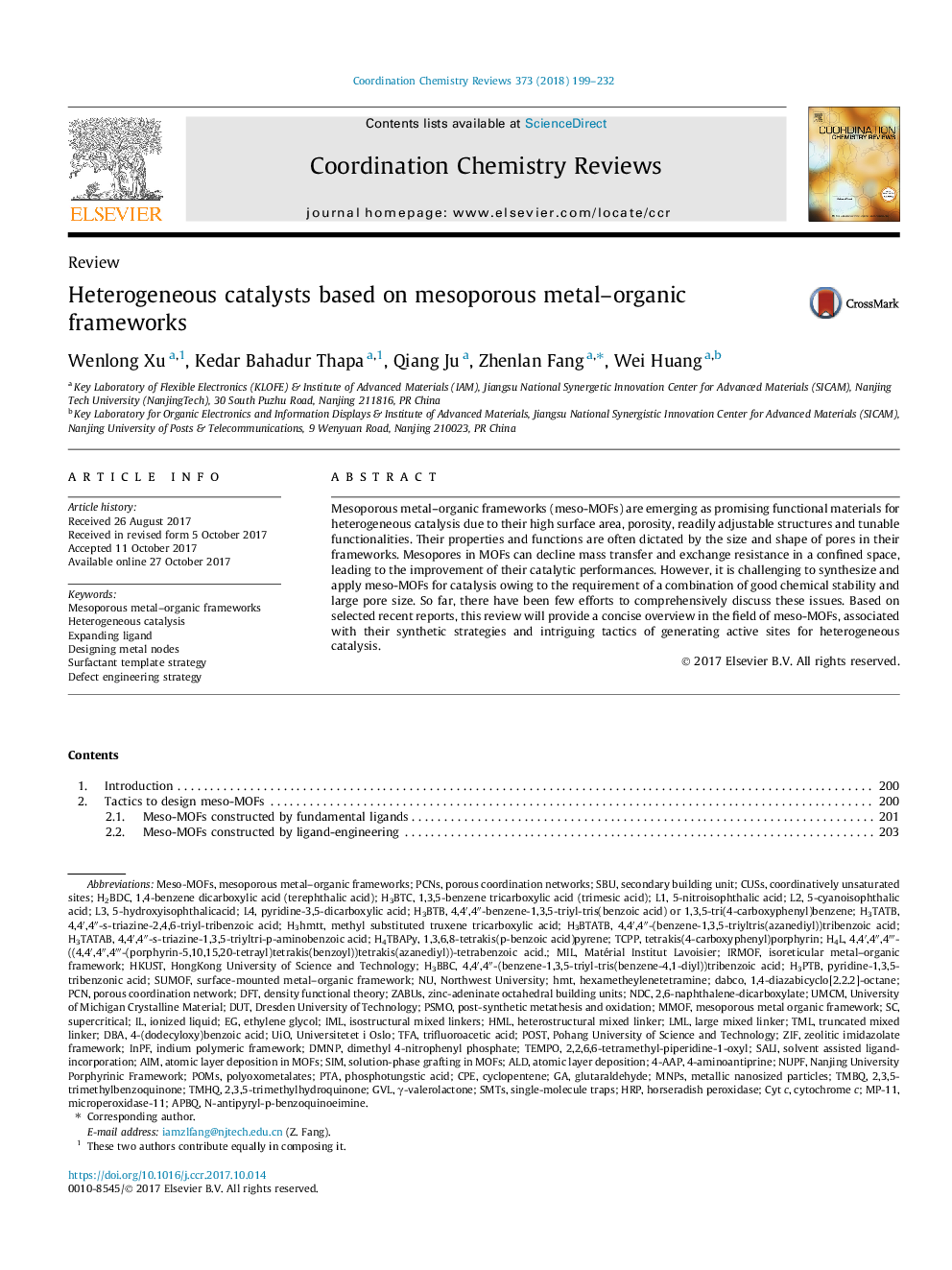| Article ID | Journal | Published Year | Pages | File Type |
|---|---|---|---|---|
| 8942864 | Coordination Chemistry Reviews | 2018 | 34 Pages |
Abstract
Mesoporous metal-organic frameworks (meso-MOFs) are emerging as promising functional materials for heterogeneous catalysis due to their high surface area, porosity, readily adjustable structures and tunable functionalities. Their properties and functions are often dictated by the size and shape of pores in their frameworks. Mesopores in MOFs can decline mass transfer and exchange resistance in a confined space, leading to the improvement of their catalytic performances. However, it is challenging to synthesize and apply meso-MOFs for catalysis owing to the requirement of a combination of good chemical stability and large pore size. So far, there have been few efforts to comprehensively discuss these issues. Based on selected recent reports, this review will provide a concise overview in the field of meso-MOFs, associated with their synthetic strategies and intriguing tactics of generating active sites for heterogeneous catalysis.
Keywords
H3BTBTFADBAPCNsPCNIMLCyt ChMTMILLMLPyridine-3,5-dicarboxylic acidUIOPTAH3btcMicroperoxidase-11MP-11IRMOFHMLMatérial Institut LavoisierH2bdcHKUSTH4tbaPytetrakis(4-carboxyphenyl)porphyrinHRPTMLGVLCPEZIFNDCTCPP2,3,5-Trimethylbenzoquinone5-Nitroisophthalic acidDFTMNPsPOMsγ-valerolactoneALDEthylene glycolTrifluoroacetic acidPhosphotungstic acidUniversitetet i OsloSBUDABCOAtomic layer depositionTEMPOSaliCoordinatively unsaturated sitescytochrome cSIMCyclopenteneSupercriticaldutDensity functional theoryAIMSecondary building unitHorseradish peroxidasepostPolyoxometalatesZeolitic imidazolate frameworkHeterogeneous catalysisGlutaraldehyde
Related Topics
Physical Sciences and Engineering
Chemistry
Inorganic Chemistry
Authors
Wenlong Xu, Kedar Bahadur Thapa, Qiang Ju, Zhenlan Fang, Wei Huang,
